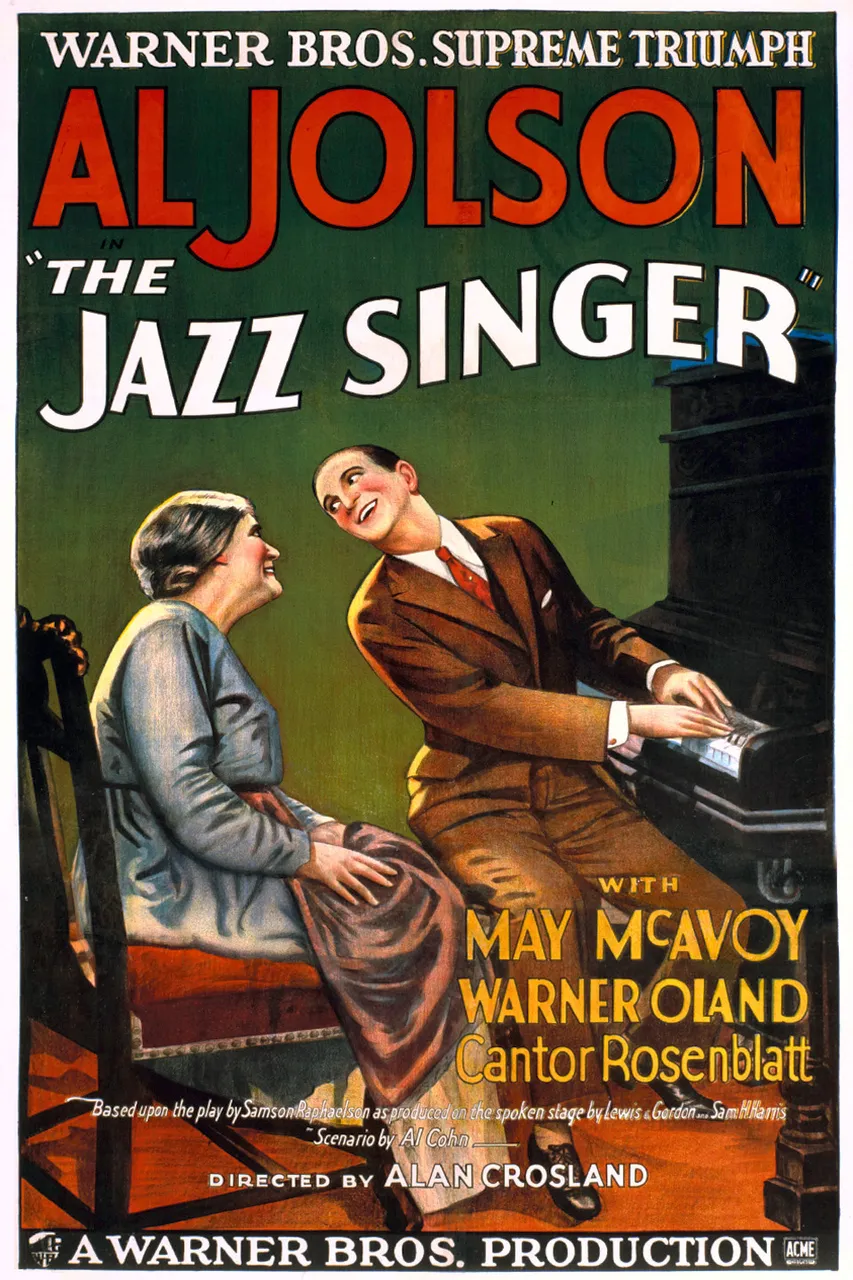
The Jazz Singer is a 1927 American part-talkie musical drama film directed by Alan Crosland and produced by Warner Bros. Pictures. It stars Al Jolson as Jakie Rabinowitz, a young man who defies the traditions of his devout Jewish family to pursue a career as a jazz singer. The film was a critical and commercial success.
It is a significant film in cinema history, released in 1927. Directed by Alan Crosland, it is a landmark in the transition from silent films to "talkies" (films with synchronized sound).
Plot Summary:
- Jakie Rabinowitz's Background:
Jakie Rabinowitz is a young Jewish man from a family with a long tradition of singing in the synagogue. However, Jakie is more interested in jazz music, which creates a conflict with his conservative father, Cantor Rabinowitz.
- Conflict with His Father:
Jakie's desire to pursue a career in jazz leads to a serious rift with his father, who wants him to follow the family tradition and become a cantor. This disagreement results in Jakie leaving home to pursue his musical dreams.
- Name Change to Jack Robin:
Jakie adopts the stage name "Jack Robin" as he begins his career as a jazz singer. He finds success but remains estranged from his family.
- Romance and Professional Success:
Jack Robin's career flourishes, and he falls in love with a beautiful young woman named Mary Dale. As he gains popularity, Jack is offered a chance to perform on Broadway.
- Reconciliation with His Father:
Despite his success, Jack is haunted by the separation from his family. When his father falls seriously ill, Jack returns home to reconcile with him.
- Climactic Performance:
On the eve of Yom Kippur, the holiest day in the Jewish calendar, Jack's father encourages him to sing the traditional Kol Nidre in the synagogue. Jack is torn between his love for jazz and his sense of duty to his family and heritage.
- Emotional Resolution:
The film climaxes with Jack singing a heartfelt rendition of Kol Nidre in the synagogue, combining traditional Jewish music with his own unique style. The performance leads to emotional reconciliation with his father and a resolution of the family conflict.
Significance
The Jazz Singer" is significant for several reasons. It was the first feature-length film to include synchronized sound, which marked the transition from silent films to "talkies." The film was also a groundbreaking example of the use of popular music in film. Jolson's performances of jazz standards such as "Mammy" and "Blue Skies" helped to popularize the genre and made him a star.
In addition to its technical and musical innovations, The Jazz Singer is also a powerful story about the conflict between tradition and modernity. Jakie's decision to pursue a career in jazz music alienates him from his family and community, but he ultimately finds fulfillment in his chosen profession. The film's themes of family, identity, and the pursuit of dreams continue to resonate with audiences today.
Here are some of the specific reasons why "The Jazz Singer" is considered to be an important film in the history of cinema:
- It was the first feature-length film to include synchronized sound.
- It was a groundbreaking example of the use of popular music in film.
- It is a powerful story about the conflict between tradition and modernity.
- It was a critical and commercial success.
- It helped to popularize the jazz genre.
- It made Al Jolson a star.
Trailer
Cast
- Al Jolson as Jakie Rabinowitz (Jack Robin)
- Warner Oland as Cantor Rabinowitz
- Eugenie Besserer as Sara Rabinowitz
- May McAvoy as Mary Dale
- Otto Lederer as Moisha Yudelson
- Richard Tucker as Harry Lee
- Yossele Rosenblatt as himself
- Bobby Gordon as Jakie Rabinowitz (age 13)
Director: Alan Crosland
Writer: Alfred A. Cohn
Box Office Gross: $2.6 million
Distributor: Warner Bros.
Genre: Musical
Release Date: October 6, 1927